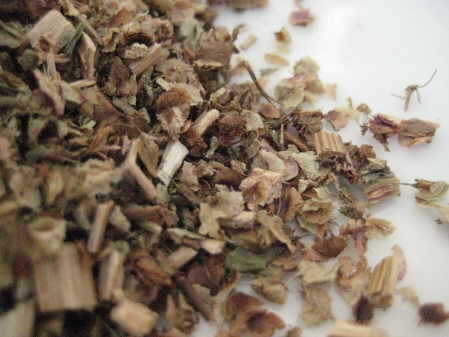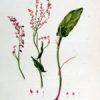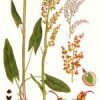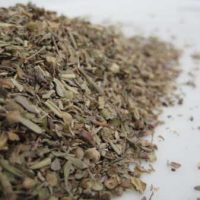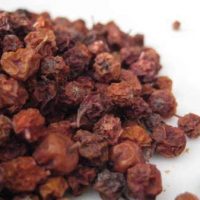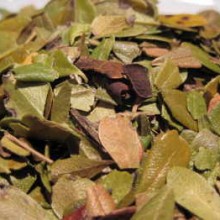Garden Sorrel (Rumex acetosa) not to be confused with Sheep’s Sorrel which is Rumex acetosella, is a perennial weed but hard to find and correspondingly expensive, particularly at certain times of the year when it cannot be harvested – you will find it difficult to obtain. It is also known as Common Sorrel or just Sorrel, Spinach dock and Narrow-Leaved Dock. It is a common plant in grassland habitats and is cultivated as a garden herb or leaf vegetable.
The plant has green arrowhead-shaped leaves and red-tinted deeply ridged stems, and it sprouts from an aggressive rhizome. The flowers emerge from a tall, upright stem. Female flowers are maroon in colour.
In the Caribbean, The name typically refers to Jamaican Red Sorrel (Hibiscus sabdariffa). A popular plant, the beverage from which is widely consumed and is dark red, with a sweet, spiced flavour. The deep red coloured annual is also used in making tarts and jellies. The fibre is also used by craftspeople. This is a different species and should not be confused
Traditional Uses & Constituents for Garden Sorrel:-
In culinary terms there are several uses of the herb including a garnish, a tart flavouring agent and a curdling agent for cheese. The leaves have a lemony, tangy or nicely tart flavour. You can put the leaves in a salad.
Medicinally, The herb contains constituents including beta carotene, tartaric acid, oxalates (oxalic acid), anthraquinones (Chrysophanol, Emodin, Rhein), glycosides like hyperoside, the quercitin-3d-galactoside.
Garden Sorrel has been cultivated for centuries. The leaves may be puréed in soups and sauces or added to salads; they have a flavour that is similar to kiwifruit or sour wild strawberries. The plant’s sharp taste is due to oxalic acid, which is mildly toxic.
In Romania, the herb is known as măcriş or ştevie, and is used to make sour soups, stewed with spinach, added fresh to lettuce and spinach in salads or over open sandwiches.
In Russia and Ukraine it is called shchavel and is used to make soup called green borscht. It is used as a soup ingredient in other countries, too.
In Hungary the plant and its leaves are known as sóska . In Turkey it is called kuzukulağı meaningthe lamb’s ear. In Polish it is called szczaw.
In Croatia and Bulgaria is used for soups or with mashed potatoes, or as part of a traditional dish containing eel and other green herbs.
In rural Greece it is used with spinach, leeks, and chard in spanakopita.
In the Flemish part of Belgium it is called zurkel and preserved pureed sorrel is mixed with mashed potatoes and eaten with sausages, meatballs or fried bacon, as a traditional winter dish.
In Vietnam it is called Rau Chua and is added fresh to lettuce and in salads for Bánh Xèo.
In Portugal, it is called azeda or azeda-brava meaning “sour”or “fiercly sour” and is usually eaten raw in salads or used to make soups. This is identical to its use in Brazil, under the name of azedinha
In India, the leaves are called chukkakura and used to make a soup made with yellow lentils or Pundi Palya , a curry made with sorrel, yellow lentils and peanuts.
In Albania it is called lëpjeta, the leaves are simmered and served cold marinated in olive oil, it is used in soups, and even as an ingredient for filling byrek pies.
The herb has been cultivated for centuries, although its popularity has decreased considerably over time and although it grows wild and is considered a common weed, it is rare and hard to find in herbal outlets or as a culinary herb. The edible leaves have a flavour that is very similar to that of kiwifruit (Chinese Gooseberry), or sour wild strawberries. Because of the mildly acidic taste, some say that it quenches thirst, and consider it helpful in boosting the appetite. The leaves may be added to salads to sharpen the taste. They are often puréed in soups and sauces and is the characteristic ingredient in shav. The plant contains oxalic acid, which contributes to its characteristic flavour, and so may be contraindicated in people with rheumatic-type complaints, kidney or bladder stones, and the like. It is also a laxative

